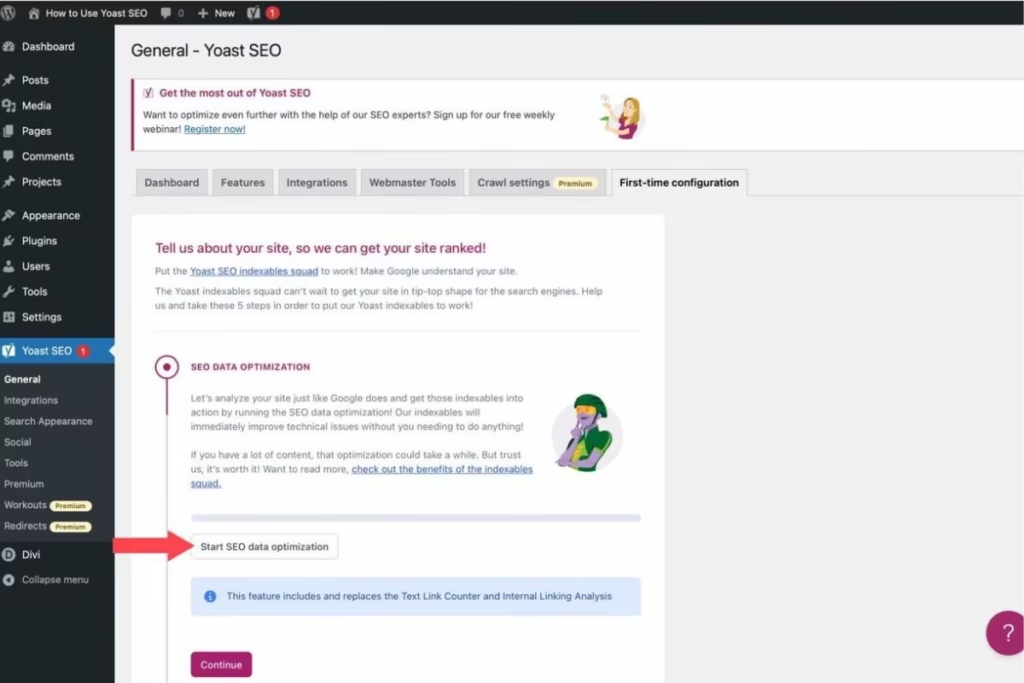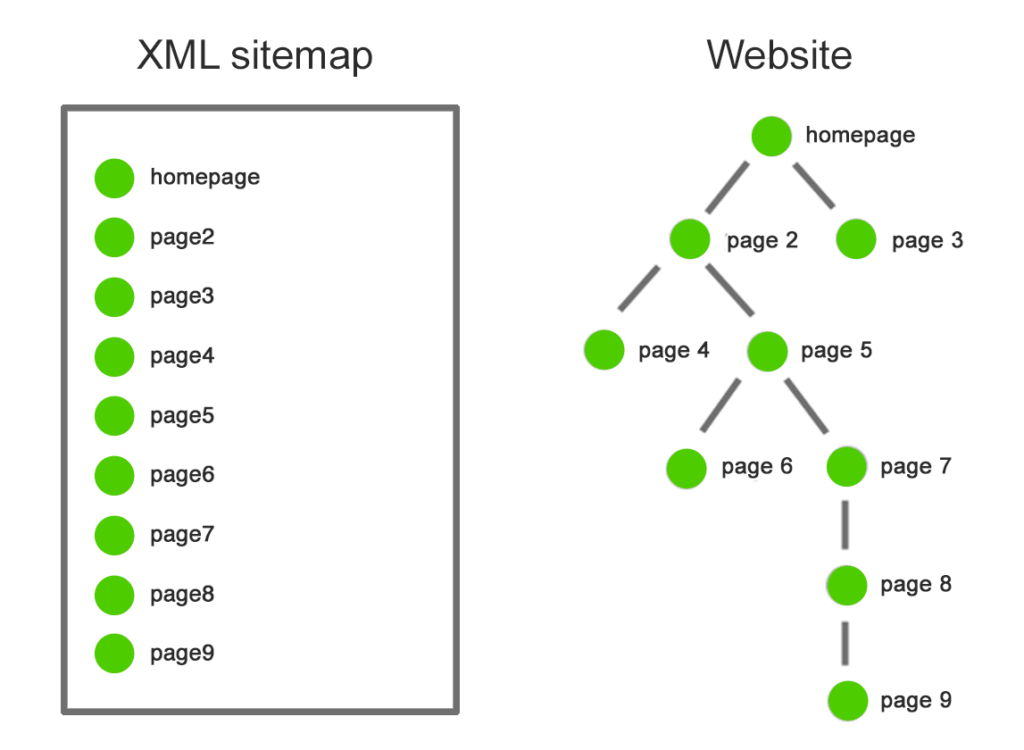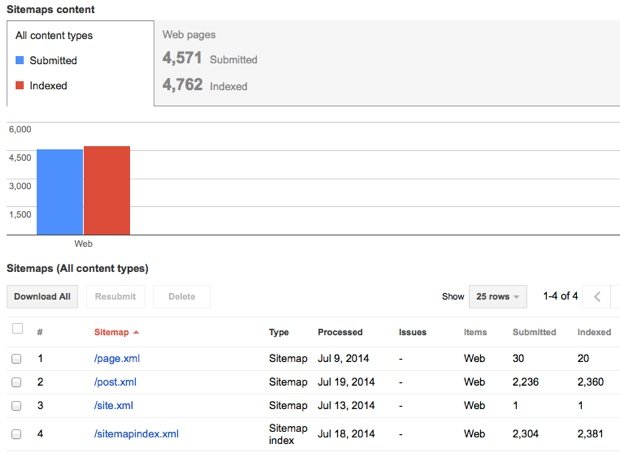Having a strong presence on Google is one of the primary goals for any business with a lead-generating website. To achieve that, you need high-quality content that search engines recognise as valuable — along with a flawless XML Sitemap that allows bots to crawl your site effectively.
That’s why it’s essential to ensure that Google is aware your sitemap exists. When Google knows where to find your sitemap, it can efficiently crawl and index all the pages on your website. Google’s official guide explains how to submit your sitemap to Google Search Console for better indexing.
Ultimately, the structure of your website — particularly your URL hierarchy — gives your site meaning in the eyes of search engines. Your sitemap ties it all together, showing how your pages are interconnected so that bots can accurately understand your site’s layout and determine where your pages should rank.

From there, your sitemap plays a key role in helping Google rank your website in search results — especially for users actively looking for the products or services you offer. An XML sitemap acts as a clear roadmap within your Google Search Console, guiding search engine crawlers to the right pages and ensuring search queries reach the most relevant destinations on your site.
In short, if you want your share of search traffic, having a well-structured sitemap isn’t just useful — it’s essential.
We’ve created this guide to help you fully understand what a sitemap is, how to implement one, and how Google uses it to interpret your website as a complete structure. This resource will walk you through the process of putting a sitemap in place, and give you a solid grasp of how to create one from scratch.
Already have a sitemap or think it’s time for an update? We’ll also cover how to optimise your existing sitemap to achieve the best possible results for your website.
What is an XML Sitemap?
At its core, an XML Sitemap is a file that lists all the pages on your website — including videos and other file types — in a format specifically designed to be easily read and understood by search engines.
XML stands for Extensible Markup Language, which is simply a structured file type used to communicate information clearly to crawlers like Googlebot.
It’s essential that your sitemap is correctly configured within Google Search Console, as this allows you to clearly outline how your pages are connected and how they function within your site’s structure.
By submitting an XML Sitemap, you’re not only showing search engines which pages exist — you’re also defining how those pages relate to each other, and how they’re meant to function as part of your overall website experience.

If certain pages don’t have any internal links pointing to them, they can become difficult for search engines to find — and are unlikely to appear in Google search results at all.
That’s why having a comprehensive sitemap submitted through Google Search Console is so important. It ensures that all pages on your website, their hierarchical structure, and the way they interact with one another are clearly visible to Google’s search bots. This allows those bots to index your content accurately and rank it appropriately when people search for relevant topics.
XML Sitemaps use structured code to outline every page on your site, their priority, how they connect, their update history, and how frequently they change. This creates a kind of digital blueprint for Google and other search engines to follow — improving crawl efficiency and helping your most important pages get discovered and ranked.

Why Do You Need a Sitemap?
The main purpose of an XML sitemap is to give Google — and other search engines — a clear roadmap of your website, allowing them to guide relevant traffic to the correct pages more efficiently.
Google uses a crawler called Googlebot, which scans the web, analyses individual pages, and indexes them so they can appear in search results.
Your sitemap helps streamline this process by giving crawlers direct access to your site’s structure. This increases the chances of your pages being indexed correctly — and ranking higher — compared to a site without a properly submitted sitemap in Google Search Console.
In addition to making your site easier to crawl, your sitemap also provides valuable context to search engines:
- Where each page is located on your site
- Its position in the URL hierarchy
- When it was last updated
- How frequently the content is changed
By submitting your sitemap through Google Search Console, you’re offering more complete and structured information to search bots once they crawl your site — and that can make a measurable difference in your visibility online.

How to Create an XML Sitemap?
There are five straightforward steps you should follow to create an effective XML sitemap — one that enhances your website’s performance, strengthens your online presence, and contributes to better overall search engine rankings.

Structure
Before creating your sitemap, it’s essential to have a clear understanding of how many pages exist on your website. Start by reviewing your site from the homepage, mapping out all the other pages and how they link to one another. There are plenty of sitemap templates available online to help you visualize the ideal structure.
There are plenty of sitemap templates available online to help you visualise the ideal structure. Once mapped, place your most important pages at the top of your site’s navigation, and then tier the remaining pages beneath them in order of hierarchy.
Coding
Depending on how your website was built, there are various ways to code your sitemap and structure your URLs. If your site is built on WordPress, many popular SEO plugins can generate an XML sitemap automatically.
Simply search for, install, and run the plugin, then configure the settings to match your site’s structure.
If you’re not using a plugin — or if you’re comfortable with manual coding — you can create your sitemap by adding XML tags to each of your URLs manually.
Validation
Whether you’ve created your sitemap using a plugin or manually, it’s important to ensure the formatting is correct. To do this, enter your sitemap URL into an XML Sitemap Validator. This tool will alert you to any errors or issues that need to be corrected before submission.
Place Your Sitemap
Your sitemap should be accessible at a standard URL such as:
http://www.example.com/sitemap.xml (replace example.com with your actual domain).
Next, locate your robots.txt file and add the sitemap URL to it. This file is typically found in your website’s root directory, which can be accessed using an FTP client or via your cPanel file manager.
The robots.txt file is just a simple .txt document (usually editable in Notepad), and adding your sitemap URL is a quick and easy step that helps ensure search engines can find and crawl your sitemap effectively.

Submit
Once you’ve completed all the previous steps, you can submit your sitemap to search engines like Google for crawling and indexing. This process is straightforward through Google Search Console, which is easy to set up if you haven’t done so already.
After logging in, navigate to Crawl on the left-hand menu, then select Sitemaps and click Add/Test. Here, you can perform a final check before submitting your sitemap. And just like that — job done.
Frequently Asked Questions
Why is an XML Sitemap Important?
It’s best to keep your sitemap file smaller than 10MB and limit it to a maximum of 50,000 URLs. Otherwise, web servers can become overwhelmed. If your site requires more URLs or a larger sitemap, you’ll need to create multiple sitemaps and organize them within a sitemap index file.
If you encounter any crawlability issues, Google Search Console will alert you, helping you identify and resolve errors.

What’s the Difference Between XML and HTML Sitemaps?
XML sitemaps are designed specifically for search engines, formatted so Google and other crawlers can easily understand, index, and rank your website’s content. In contrast, HTML sitemaps are created as visible guides for human visitors to help them navigate your site.
Does Your Website Need an XML Sitemap?
While Google recommends XML sitemaps primarily for large websites with extensive content, the truth is that every website can benefit from having one. Not having a sitemap can put you at a disadvantage compared to competitors who do.
How Do I Automatically Update My XML Sitemap?
If you’ve set up a sitemap before, there’s a chance it may be outdated due to changes made to your pages or website. The simplest way to keep your sitemap current is to use a WordPress plugin—search for “Google XML Sitemaps” in WordPress—and it will automate updates for you.
What is a Sitemap and Its Purpose in SEO?
Your website likely contains a lot of content — and a sitemap helps bring structure and clarity to it. By organising your pages in a meaningful way, a sitemap ensures that Google, Bing, and other search engines can properly index all of your content. This directly supports your SEO efforts and helps increase your organic traffic through more accurate search visibility.
If this all feels a bit overwhelming, our SEO agency in Melbourne can step in to help you sort out any sitemap issues and ensure your content is clearly indexed by those nifty little bots.


